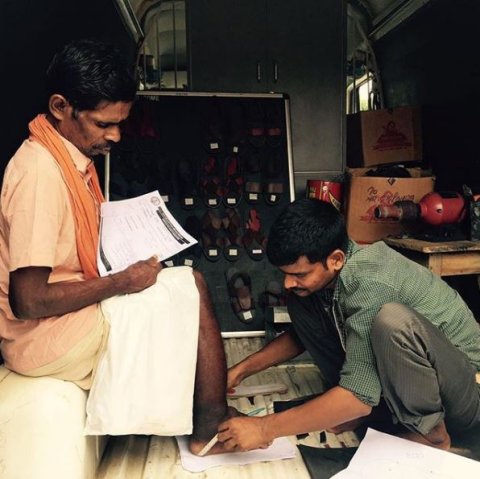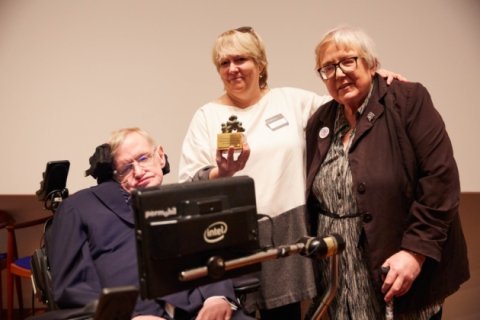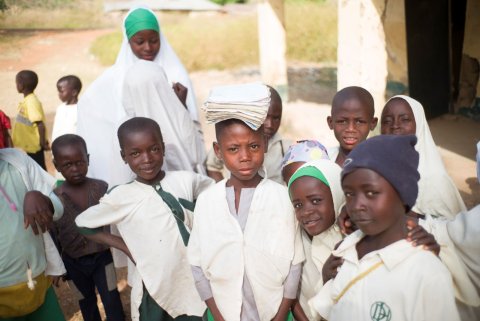Momentum is growing in the journey towards NTD elimination but we cannot be complacent as we approach the ‘last mile’

Neglected tropical diseases (NTDs) are a group of preventable and treatable diseases that affect over 1.5 billion people.
Poverty is both a cause and consequence of NTDs, they keep children out of school and parents out of work – limiting potential. It wasn’t until fairly recently that the word ‘neglected’ was first used in connection with tropical diseases.
This association started due to the gaps in funding, research and programmes to treat communities endemic with NTDs. These diseases continue to impact some of the world’s poorest people – the voices of whom are far too often neglected even today.
A turning point for progress on NTDs
But, there has been significant and positive progress since the term neglected tropical diseases was first coined.
Certainly a significant turning point was on 30 January 2012 when I, with the team representing Sightsavers, joined a global community of organisations including: endemic countries, donors, pharmaceutical companies and non-government organisations who made a commitment to control, eliminate or eradicate ten diseases by 2020.
We each made our pledge by signing the London Declaration on Neglected Tropical Diseases together on that day.
Since then, the growth in momentum is palpable, particularly to end trachoma. In 2012, Oman became the first country to eliminate trachoma as a public health problem.
Morocco followed and last year Mexico, Cambodia and Laos also celebrated the removal of trachoma in their countries.
Another five countries: China, Iran, Myanmar, Gambia and Ghana are believed to have reached their elimination targets for the world’s leading infectious form of blindness and are awaiting validation by the World Health Organisation. But despite this success, trachoma is still officially a public health problem in 39 countries.
One billion treaments for NTDs reached, much more to be achieved

With just two years to go to deliver the pledges made in the London Declaration, we must re-focus our efforts and prepare to adapt our approach to challenges which lie ahead.
This was recently put into perspective for me, while listening to Professor Stephen Hawking as he led global celebrations to acknowledge the one billion treatments Sightsavers and partners have delivered to people affected by NTDs.
During his keynote speech Professor Hawking said:
“The smallpox, polio and Guinea worm programmes, all demonstrate that the last mile on the journey to elimination is always the most difficult. Therefore, much still remains to be done, if we are to reach our elimination targets.
In any ambitious programme, be it research into the farthest corners of the known universe, or the planned growth for an international health programme, none of us can rest and assume that our current tools and resources are sufficient to achieve success.”
His words about not being complacent with the tools and resources we currently use should be listened to. I believe that as we draw closer to consigning NTDs to the history books, this next chapter will be our most challenging - and yet also the most rewarding - phase yet.
Technology to control and eliminate NTDs

Developments in technology, particularly the use of smartphones are increasingly playing a frontline role in the control and elimination of NTDs.
For example, later this year Sightsavers and partners will launch an app to help monitor the progress of people who have had sight-saving trachoma trichiasis (TT) surgery to help ensure that these people get any follow-up care they may need.
This is just one example of how technology can be used to improve service uptake and programme delivery.
Moreover if we, as a global community, are to be successful in ending NTDs, we must reach people in the most hard to reach places and situations, such as those affected by wars, conflict and crisis.
Sightsavers in Sudan and our partner, the Ministry of Health, carried out the first mass distribution of treatment drugs for trachoma in the states that make up Darfur. After years of conflict, relative stability meant that teams of health workers were able to map for trachoma and then implement treatment.
In a year, more than 300 trained volunteers (90% of whom were women) reached 1.9 million people - the first time the people in this part of the Sudan have been treated for trachoma. The second round of treatments, where required, will continue this year.
Programme to fight NTDs must have long term benefits
Part of our responsibility as a development organisation is to help ensure that programmes have long term benefits.
I believe the key to this is ensuring communities are involved and have ownership at every stage of the process. This must be at the forefront of our minds as we approach a vital stage in the elimination journey.
Donors such as UK aid and The Queen Elizabeth Diamond Jubilee Trust are particularly committed to long term impact and ensuring that countries are able to stand on their own two feet when projects come to an end.
Through this commitment, their projects are strengthening healthcare systems by training health workers and supporting hygiene behaviour programmes such as teaching school children about the vital importance of face and hand washing in protecting themselves and others from blinding trachoma.
I am very proud of the work Sightsavers and partners continue to contribute to the global effort in eliminating NTDs.
Together we have come a long way, but as we reach this next critical stage, it is more important than ever that the people affected by neglected tropical diseases get the attention and support they need.